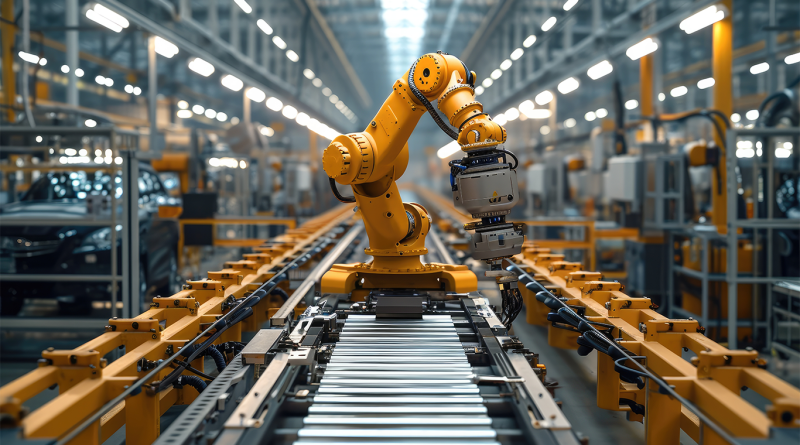How AI-Enabled Robots are Redefining Construction
The construction industry is experiencing a digital revolution, spearheaded by the deployment of AI-powered autonomous robots. These sophisticated machines are enhancing efficiency, improving safety, and cutting costs across various construction projects. From monitoring site progress to performing complex tasks, AI-driven robots are reshaping the landscape of construction. This article delves into the multifaceted role of these robots, highlighting their benefits, economic impact, and future prospects.
The adoption of artificial intelligence (AI) in the construction industry marks a significant shift towards automation and precision. AI-powered robots, like the Didge bots developed by Nextera Robotics, are revolutionizing site monitoring by capturing high-definition images and comparing them with digital building information models (BIM). This capability allows for precise tracking of construction progress, ensuring that projects adhere to planned specifications.
Moreover, autonomous robots such as the Hadrian X, a bricklaying machine, showcase the potential of AI in handling labor-intensive tasks. Hadrian X can lay bricks at an unprecedented speed of 1,000 bricks per hour, achieving 100% accuracy and significantly reducing the time and labor required for construction. These advancements not only streamline construction processes but also address the industry’s chronic labor shortages.
Enhancing Safety and Efficiency
AI-driven systems are critical in enhancing safety and efficiency on construction sites. The use of AI for real-time monitoring and data analysis allows for proactive identification of potential hazards. For example, AI systems can detect safety violations, such as missing protective gear or unsafe use of machinery, and immediately alert safety personnel. This proactive approach reduces the incidence of accidents, making construction sites safer for workers.
In addition to safety, AI contributes to operational efficiency through predictive maintenance. By analyzing data from various sensors, AI can predict equipment failures before they occur, allowing for timely maintenance and preventing costly downtime. This not only extends the lifespan of machinery but also ensures continuous, uninterrupted project workflows.
The economic advantages of integrating AI into construction are substantial. AI systems optimize resource allocation, ensuring that materials, labor, and machinery are used efficiently. This optimization minimizes waste and reduces overall project costs. For instance, machine learning algorithms can forecast project timelines and budgets with high accuracy, helping prevent cost overruns and delays.
Furthermore, the ability of AI to perform tasks traditionally handled by skilled labor addresses the current labor shortages in the industry. Technologies like the AI-powered bricklaying robots by Monumental not only fill the gap left by the declining number of skilled masons but do so at a lower cost and higher efficiency. This capability is particularly beneficial in large-scale projects where speed and precision are critical.
The Future of AI in Construction
As AI technology continues to evolve, its applications in construction are set to expand. Future developments may include more advanced drones for aerial site assessments and AI-driven generative design tools that can optimize building designs for both functionality and aesthetics. These tools will further streamline the construction process, reduce costs, and improve the quality of the final output.
Moreover, the integration of AI with other emerging technologies, such as the Internet of Things (IoT) and 3D printing, promises to transform construction sites into fully automated smart zones. These technologies will enable real-time data collection and analysis, allowing for more dynamic and responsive project management. The integration of AI-powered autonomous robots in construction is not just a technological upgrade; it is a transformative shift that redefines the industry’s future. These robots enhance safety, efficiency, and cost-effectiveness, making them invaluable assets in modern construction projects. As the technology matures, we can expect even greater innovations that will continue to push the boundaries of what’s possible in construction, ultimately leading to safer, more efficient, and more sustainable building practices.
Sources:
- GeekWire
- RoboticsTomorrow
- Mindtitan
- AEC Cloud
- World Construction Today
- VOAnews
